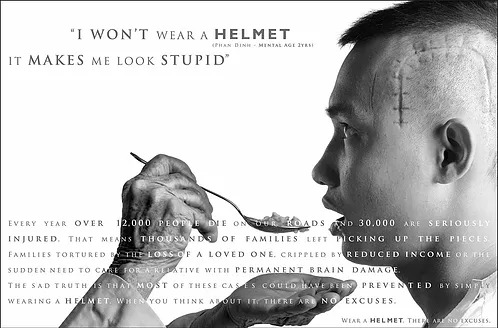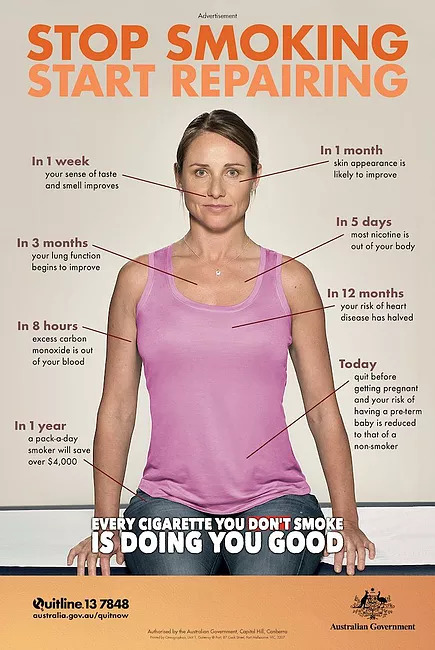Have you ever tried to change someone’s behavior (and no, I don’t mean your partner’s sloppy domestic habits)? If so, you know it can be like pushing a giant boulder across the desert. That’s because behavior change is really hard.
Many of us working to improve our communities spend a lot of time trying to change behavior through a variety of education and outreach programs. We do all kinds of things to help others live their healthiest lives. We encourage community members to quit smoking, exercise, use condoms, budget their money, maintain a work-life balance, wear a helmet, and hundreds of other behaviors that could improve their lives.
So, how do we go about helping our communities make healthier choices while maintaining our own sanity? The best way is to use an evidence-based program that’s been proven to affect the behaviors you want to change. But sometimes using an evidence-based program just isn’t feasible for several reasons:
- The programs cost too much
- You can’t meet the programs’ implementation requirements
- The programs aren’t demographically or culturally appropriate for your community
- There aren’t any programs that impact the behavior you want to change
If you can’t find a program that fits your needs, you may want to consider designing your own programs or incorporating evidence-informed practices into your existing work. Fortunately (unless you’re a public health doctorate student during comps), there are dozens of behavior change theories and models you can use.Behavior change theories are used to explain why behaviors occur (or don’t) and indicate the ways in which we can most effectively change behaviors. Decades of research has shown that using behavior change theories and models in your work significantly improves your outcomes (i.e., more people change their behavior!).
One of the most widely models used to study and change behavior is the Health Belief Model (HBM). The model basically says that an individual’s behavior is determined by their beliefs about the behavior and the condition that might result from the behavior.
Here are the key constructs of the HBM and how you can use them in your programs:
PERCEIVED SUSCEPTIBILITY
What it is
How at risk a person considers themselves to be for the disease, illness, condition or situation you want them to avoid.
How you can use it
Tailor any risk data you use to the population you’re working with. For example, if you’re trying to encourage condom use to reduce HIV infection for young men, use HIV prevalence and incidence data for young men of the same age.
Discuss susceptibility realistically based on the individual’s behaviors. For example, if a person smokes one pack of cigarettes a day, find data that shows what the true risks are for disease/illness for people who smoke one pack a day.
PERCEIVED SEVERITY
What it is
How bad the person thinks the disease, illness, condition, or situation will be if it occurs.
How you can use it
Share information on the true consequences of the condition you want them to avoid. Personal testimonies work well here because they help people understand what it’s like to live with conditions such as lung cancer, HIV, brain injuries, etc. The advertisement below has done a great job of increasing perceived severity and has tailored it to a specific audience (young men) who are the least likely to feel susceptible.

PERCEIVED BENEFITS
What it is
How beneficial a person thinks the necessary behavior change will be.
How you can use it
Sometimes, behavior change produces immediate benefits. If that’s the case for the behavior you hope to change, use it. My personal favorites are the advertisements that show how your body improves as soon as you quit smoking (like the one below). These images do a great job of helping people understand the immediate benefits, which is especially important for young people who are rarely thinking about their health at the ripe “old” age of 50.

PERCEIVED BARRIERS
What it is
The barriers, or costs, a person expects to encounter if they try to change their behavior.
How you can use it
Help people identify the personal barriers they will encounter when they try to change their behavior. This identification process can be incorporated into a brainstorming activity or personal journaling. Once they’ve identified barriers, provide opportunities for them to increase their confidence and develop the skills they’ll need to change. For example, comprehensive sexuality education programs incorporate lots of activities that help youth consider the resistance they may get from partners who don’t want to use condoms and develop skills and confidence in responding to this resistance.
CUES TO ACTION
What it is
The strategies used to motivate a person to change their behavior.
How you can use it
There are lots of ways you can add cues to action to motivate behavior change. If you’re with the individuals regularly, add visual cues somewhere they’re likely to notice. You can also inform people of cues to action that may be helpful and help them identify the most effective reminder for them. For example, if someone wants to incorporate more physical activity into their day, they may want to add a calendar reminder to exercise or use a fitness tracker that sends a reminder to move after a set period of time.
SELF-EFFICACY
What it is
The confidence a person has to change their behavior.
How you can use it
To me, this is the most rewarding construct to address because you can typically sense the shift in confidence and excitement to change. The key here is to provide training, skill-building activities, opportunities to demonstrate the behavior, encouragement, and reinforcement. For example, if you want a group to eat healthier and add more fruits and vegetables to their diet, you could facilitate a grocery store activity or cooking class to build confidence in selecting and cooking fruits and vegetables.
Ready to start using the Health Belief Model? Here are a couple of things to keep in mind before you do:
- Not every theory can be used to address every behavior.
- Theories can be used most effectively when you understand the construct your community struggles with the
most. - It may make sense for you to combine constructs from multiple theories.
- Theory is only one part of an effective program.
If you’re going to design your own program using any behavior change theory, it’s important to do additional research on how you can apply the theory to your work. My favorite reference book for all things theory is Health Behavior and Health Education; Theory, Research, and Practice (5th edition). You can also find a lot of peer-reviewed articles on how the HBM has been used in communities across the world by doing a simple search on Google Scholar or any journal database.
- How to streamline your grant process - November 2, 2021
- Should your nonprofit add a new program or service? - April 27, 2021
- How to tell if a federal grant is a good fit - April 13, 2021
